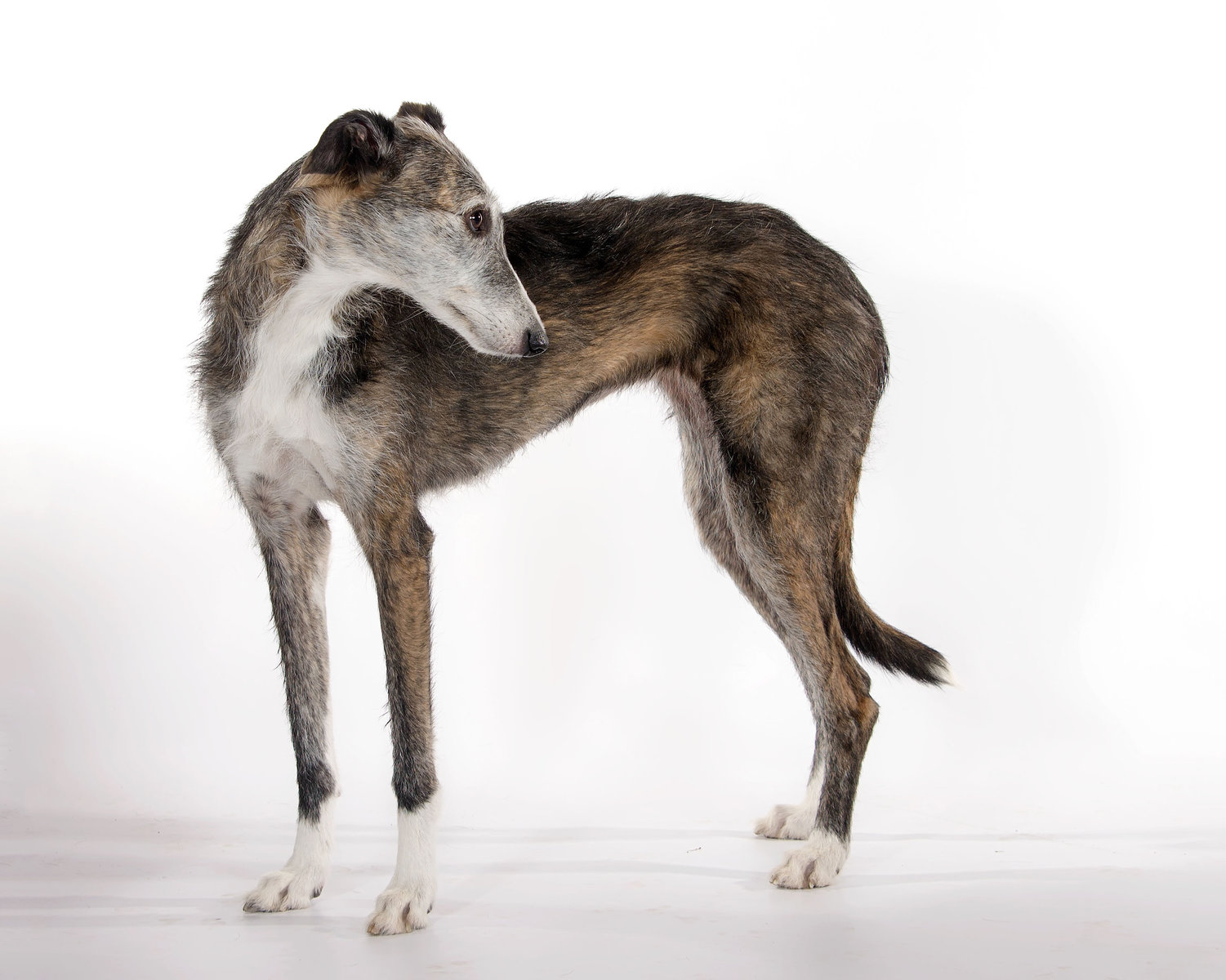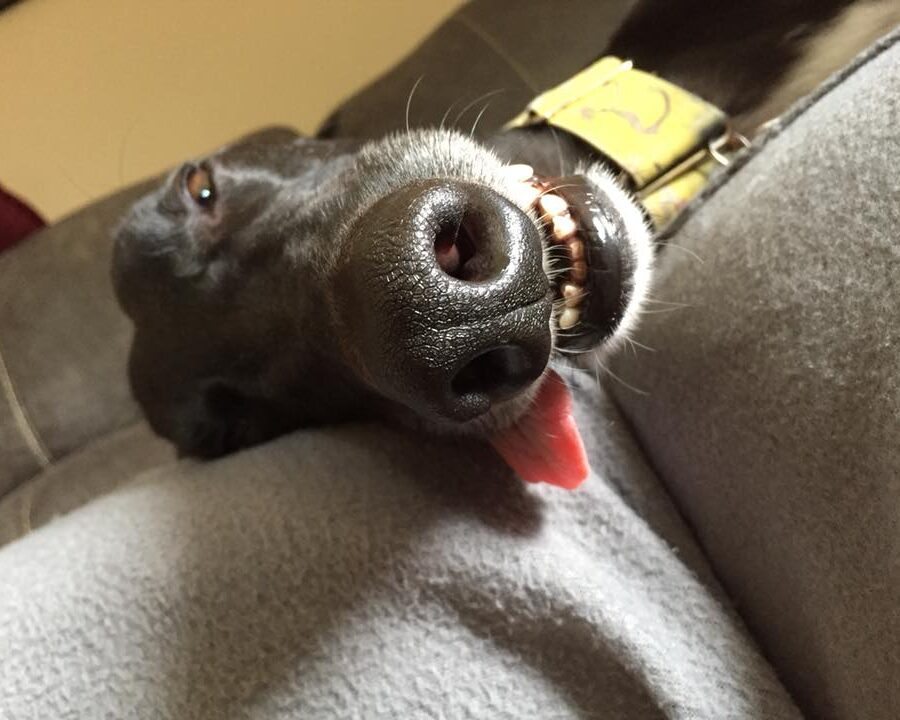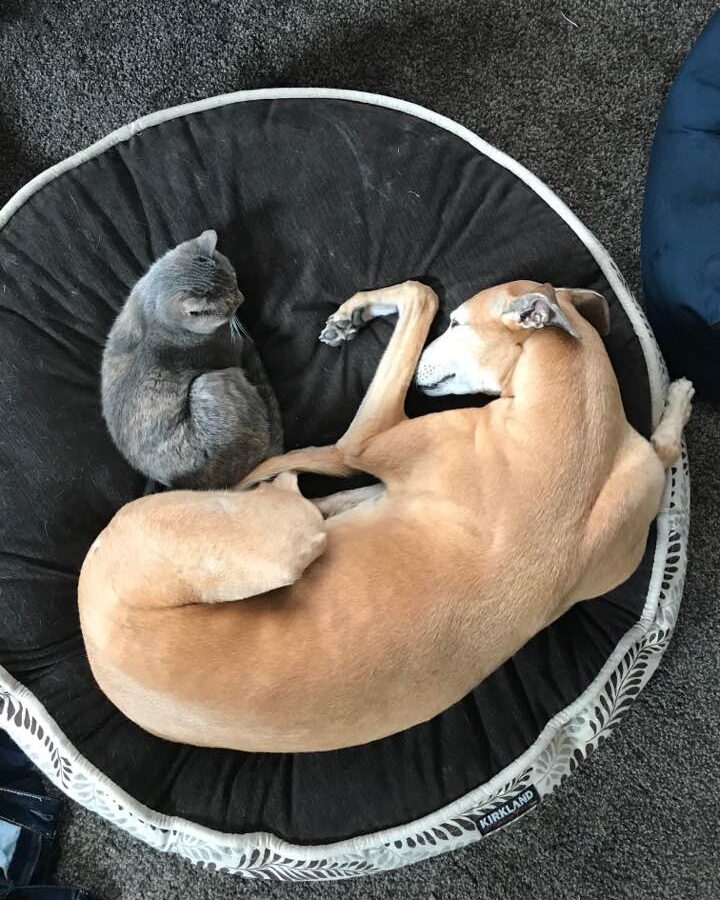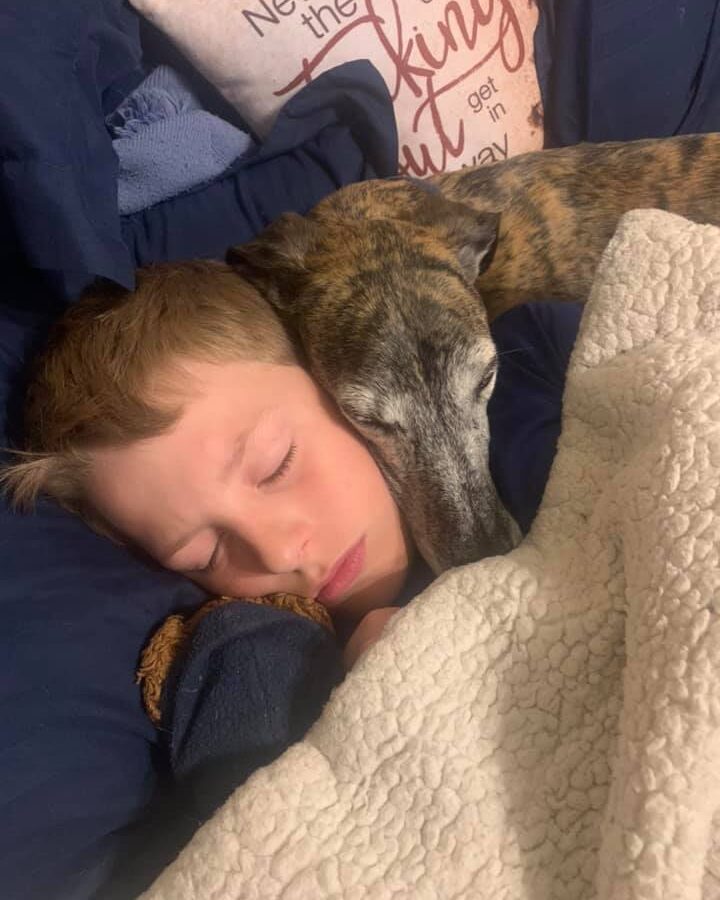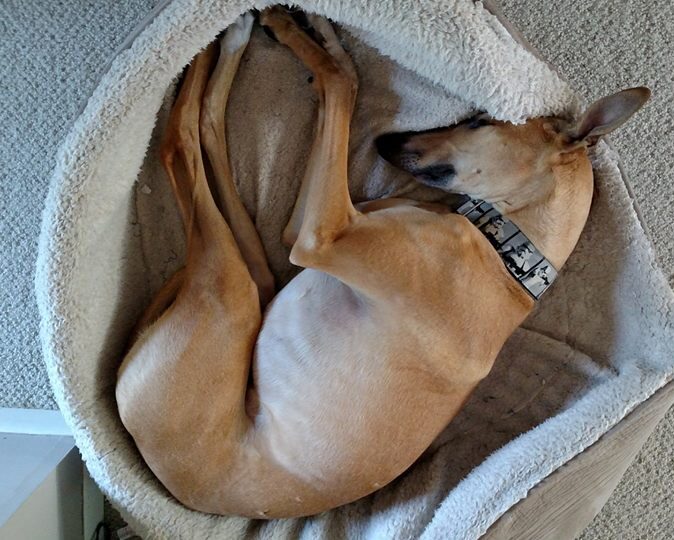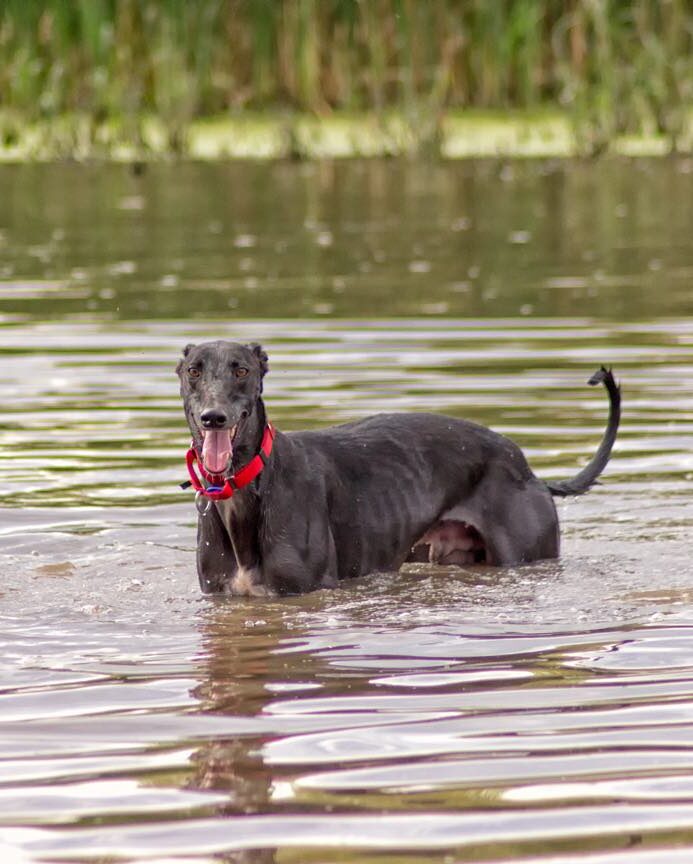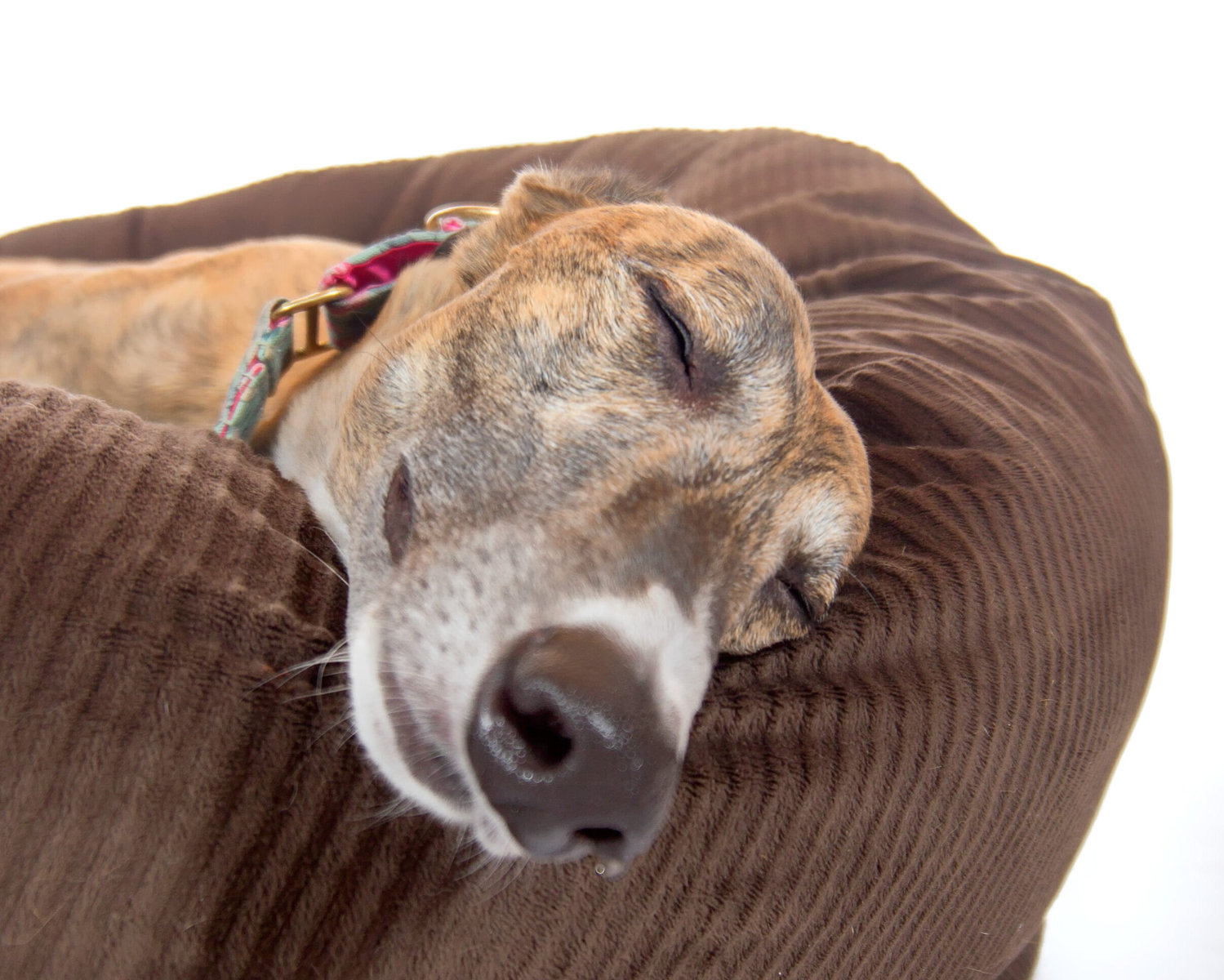Sighthound FAQs
In case you were wondering.
How old are your adoptable Sighthounds?
We get Sighthounds of all ages! The Greyhounds/Lurchers we receive locally are most often ex-racers from field trial racing, and they are generally between 12 months – 5 years old; however we do get older breeding dogs as well. Greyhounds and Whippets rescued from the Chinese meat markets range from 6 months old (we get a few puppies per year) up to seniors. The Galgos we receive from Spain have generally been in the 2-7 year old range. We love senior dogs and try to offer rescue space to these dogs whenever possible.
Do Sighthounds have any special needs?
The two main ‘special’ needs of a Sighthound are: 1) They MUST be an indoor dog, and 2) they MUST be kept on a leash or in a fenced area at all times.
Sighthounds have very little body fat and very thin coats (with the exception of some of the Staghounds who are fuzzy). They cannot handle very cold or very warm weather for more than a short time, as they will get hypothermia or heat stroke. As a general rule, if you’re not comfortable outside naked, neither are they.
A run in the yard is fine, but they should never be left outside while you go off to do something else. Sighthounds have sometimes been bred and trained to chase a lure. For this reason, they can never be let to run free. They may come to you 99 times, but that 100th time they’ll see something off in the distance—maybe a scrap of paper blowing in the wind—and they’ll take off after it. Their instinct will tell them to chase it, and no amount of yelling from you, or traffic on the freeway, will distract them from the chase. You will not be able to catch them, and they will not be able to find their way home. Fortunately, most Sighthounds are excellent leash walkers and will happily walk with you on leash. Many (but not all) Greyhounds and Lurchers can stay inside a 4-foot fence; however, we require a 6-foot fence for all Spanish Galgos.
Do Sighthounds need lots of exercise?
No! Sighthounds do not require any more exercise than any other breed of dog. Contrary to popular belief, most of them are lazy! People think that because they are fast dogs, they must be full of hyperactive energy. Just the opposite is true. At a racetrack, Greyhounds run a 15-30 second race every 3-4 days. In the home, Greyhounds tend to have short bursts of energy, followed by very long periods of naps. The pet Greyhound might get the ‘crazies’ for a minute or two, during which he does figure-eights in the yard, or tosses a toy around in the living room. But after that, he’ll be down for the night and sleeping like a baby. They don’t call them the “40-mph Couch Potato” for nothing! Of course, we do recommend a nice daily walk or romp in the yard to keep your Sighthound healthy. Spanish Galgos are trained and bred for more extended endurance; however, even Galgos are typically content to nap 20+ hours a day.
Are Sighthounds cat friendly?
Some are, some aren’t. Just like any other breed of dog, some Sighthounds will tolerate cats and some will not. We try to have a good idea of which dogs are and which dogs are not before we send the dog home. However, this is not a fool-proof test. A dog may react differently to your cat than he did to our ‘test cat,’ and he may react differently in your home than he did in ours. For this reason, we always send a hound home with a muzzle for those first few encounters. This way, you can let the hound get right up close and personal to the cat, smell it, and satisfy his curiosity, without having to worry about him biting the cat. Once you are comfortable that your hound is either uninterested or scared of the cat, you can take off the muzzle. To be on the safe side, we do still recommend that any large dog (like a Greyhound) not be left unsupervised with a cat or small dog. You just never know what goes through their heads, and it only takes a second for something to happen. You can always muzzle your hound when you leave the house–our Greyhounds are used to wearing basket muzzles, which allow them to eat and drink comfortably.
Are Sighthounds good with kids?
Some are, some aren’t. Again, just like any other breed of dog, all Sighthounds are individuals. Some might love to hang out with your kid, and some might rather be anywhere else on planet Earth. The trick is picking out the dog that’s right for you. That is why we require you to bring along any children that will be interacting with your hound on the day you adopt the dog. A dog who seems uninterested in your child is not what you want–the dog may be paralyzed with fear. You want a dog who interacts calmly and comfortably with your children. In general, our adoptable Lurchers are often the best bet for children; but again, every one is an individual.
That said, every dog has their limit. And anything with teeth can bite. You may be able to pull the dog’s ears 6 straight times, but the 7th may send them over the edge. They’re just like people in this regard–push them too far, and they may just snap. Children need to learn to be respectful of the dog’s body and personal space, and to play gently. In particular, Greyhounds are prone to something called ‘sleep aggression.’ If suddenly awakened out of a deep sleep, they may startle and snap before they know what they are doing. Children need to be taught to say the dog’s name and approach with an outstretched hand (rather than a big hug) when doggie is asleep. As a general rule, you should never, ever, let your children play unsupervised with any dog, Greyhound or otherwise.
Don’t you need a big house for such a big dog?
Actually, Sighthounds can be great apartment dogs! They spend the majority of their time sleeping, so as long as you can get them out for a walk to relieve themselves 4-5 times per day (or let them romp in a fenced area 4-5 times per day), they do not require much space. People are always amazed at how small they can curl up when they sleep. Also, they are not eager barkers, which makes them good for close quarters with neighbors.
Do Sighthounds have many health problems?
Not at all! Greyhounds and other sighthounds tend to be very sound and healthy dogs; they have a strong heart and lungs, and very good joints. You almost never see things like hip dysplasia in Sighthounds, like you do in many other purebred dogs. There are no serious health problems associated with the breed, apart from tending to have yucky teeth (the ex-racers in particular). Keeping the Greyhound’s teeth clean is pretty easy, though, since almost any Greyhound will allow you to brush his teeth. Healthy teeth will help prevent other health problems developing in the future.
Greyhounds, Lurchers, and Galgos typically live to 12-14 years old, which is considerably longer than many breeds of a similar size. As they get up into their double-digits, they will often start to develop some arthritis in their back ends. They may seem stiff—especially in the morning—and will start to have a harder time getting up from their beds. Feeding dietary supplements like glucosamine and chondroitin when the dog starts to get up in years can help prevent this, and can improve an arthritic dog’s quality of life considerably.
How can I get more information on Sighthounds?
Contact one of our representatives or come to a Meet n Greet! You can also meet a Sighthound and talk to owners about their experiences with the breed. Check out other pages on our website for lots of info about Sighthounds, as well as our schedule of events.


